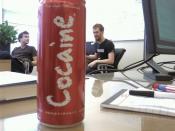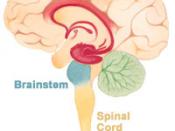Intellectual Decisions
It is used in offices, parties, on street corners, in homes, and even in schools. With so much wide-spread abuse, cocaine is in extreme demand. Cocaine abuse has risen 118% since 1990, and continues to rise (World Book Enc.). Cocaine addiction is easy to understand-- it [cocaine] produces a good feeling, so naturally people would tend to want more of it. The question now though, is: how does it produce these feelings, and why is the addiction so strong. By taking a look at cocaine from it's entrance into the body, to the end of it's high, and the side-effects it produces, the answers to these questions will become clear.
Cocaine comes in two forms--preprocessed and cut (which is the most popular, and most expensive on the market), or in rock form which is most commonly called 'crack'. Cocaine is taken mainly in two ways: inhalation, and injection(Encarta '96).
When inhaled, cocaine travels up through the nasal passage to the capillaries that line the olfactory nerves. This provides a more direct route to the brain than an injection and gives what is commonly referred to as a 'quick high'. The olfactory nerves will receive some of the cocaine particles and mistake them for smell-producing particles. The cocaine will enter the nerve and eat away at it, and in time, will destroy it, leaving the victim with no sense of smell (Drugs and the Brain).
Cocaine needs to be in the bloodstream to become effective. Whether through the nose capillaries, or an injection, once the cocaine is in the bloodstream, it will travel to the brain. Cocaine particles bear a striking resemblance to glucose molecules, so as they enter the brain, the hypothalamus will send messages to the brain to open more dendrical receptors to receive the overflow of...


